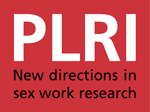book chapter
An analysis if different political conceptualisations of sex work. Excllent 1998 article by Dr Alison Murray who was one of the first sex workers to recognise the rise of the myths and flawed discourse of trafficking as a potent threat to sex workers human rights. Chapter in Laura J. Shepherd (Ed.), Gender Matters in Global Politics: A feminist introduction to international relations (pp. 89-101) Abingdon, Oxen, U.K.: Routledge. A chapter by Ramjee G in Abdool Karim S. S. ‘HIV/AIDS in South Africa’, Cambridge University Press. The author provides an overview of the dynamics of sex work and HIV in Africa

